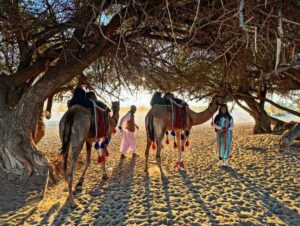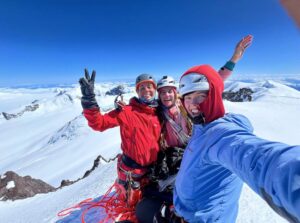The first thing that comes to mind about the Caribbean is not marathon treks but coral sand, palm trees, beach chairs and drinks with umbrellas in them. But the small island of Dominica (not to be confused with the Dominican Republic), nestled between Guadeloupe and Martinique in the eastern Caribbean, offers something different: the Caribbean’s only long-distance hiking trail.
Known as the Waitukubuli National Trail, it meanders 185km over mountains and through dense Dominican rainforest. Waitukubuli, the pre-Columbian name of the island, means “tall is her body” and refers to the volcanic fertility of the land and the mountains.

The Waitukubuli Trail. Photo: OECS
Before modern roads, the island was interconnected by trails, which had been carved out by various groups over the centuries: hunter-gatherers, the indigenous Kalinago people and of course, the enslaved Africans. Such footpaths were also vital to maroons (escaped slaves), who hid from their captors and established their own communities in the remote mountains. For thousands of years, hiking has run deep in Dominican veins.
The idea of a long-distance trail was first conceptualised by Dominican lawyer Bernard Wiltshire in the 1990s. In 2002, an avid hiker named Michael Eugene established a tour company that supported this idea and started leading hikers along the trails. With funding from the European Union, the Dominican government, Regional Council of Martinique, local farmers and landowners, the Waitukubuli National Trail officially became a reality in 2013.
The trail starts at Scott’s Head, the island’s southern point, and ends at the northern tip, in Cabrits National Park. Each of the trail’s 14 segments has its own challenges, so hikers who don’t want to do the entire route can pick those sections that best suit them.

Entrance to the trail. Photo: LargeUp.com
The trail runs through coastal, rainforest and elfin forests. Some sections are rugged and volcanic, others feature deep gorges, natural hot springs and a Boiling Lake. It also mounts the island’s volcanic peaks, including 1,447m Morne Diablotins, Dominica’s highest peak and the second highest in the Lesser Antilles.
While the Waitukubuli National Trail is not widely promoted, it attracts hundreds of hikers each year, from families to professional athletes. The whole route takes an average of about two weeks. The challenges of this tropical trail include insects and mosquitoes, extreme heat, humidity and the ever-present smell of sulphur from the island’s single active volcano. Thankfully, Dominica is free of venomous snakes.

Hikers approach Boiling Lake. Photo: wiredforadventure.com
Camping is not permitted to protect the local ecosystem, but eco-lodges and B&Bs offer lodging en route. Often, locals are happy to welcome travelers into their homes.
The one significant threat to this national treasure are the hurricanes. Dominica lies in the hurricane belt and has been battered repeatedly over the years by Category 1 to 5 storms. In 2017, Hurricane Maria caused immense devastation and instability. Major landslides and flooding resulted in the closure of trail segments 7 to 9, but they reopened last year 2019.
Although a modest hike compared to some of the others we cover, the Dominica trail lets restless people to experience the Caribbean without relaxing.






